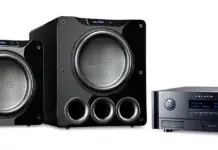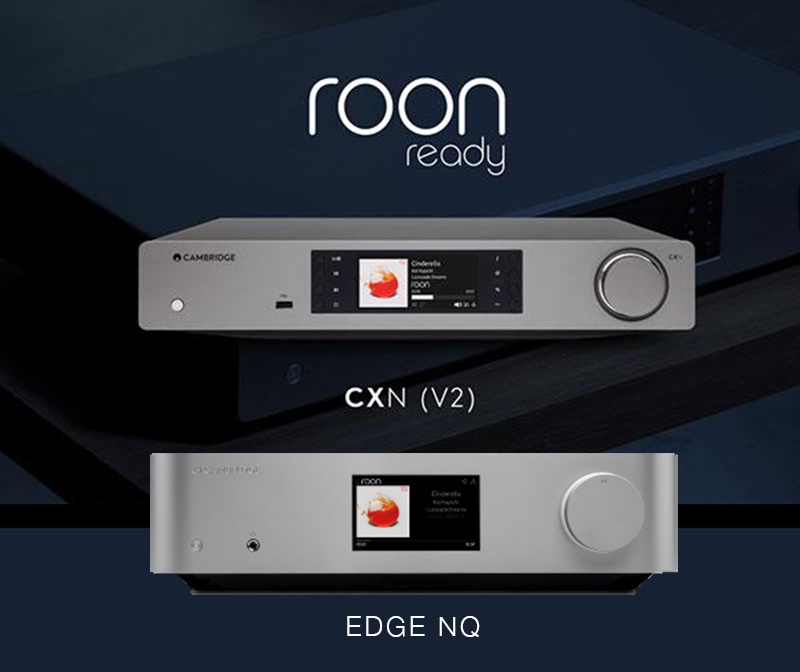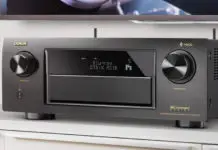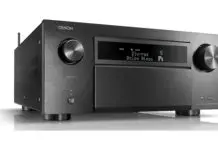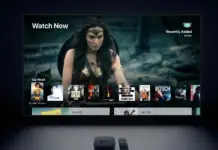My house can’t accommodate a dedicated home theater and media room. So, I’m in the position of trying to fit my equipment into existing rooms. There are two rooms that I’d like to turn into what I called “theater-enabled” rooms. By that, I mean that they are setup for multichannel audio but they are really multipurpose rooms.
The first room that I’ll focus on is the family room. The family room is a casual room where we lounge around. It’s carpeted, there are Lego toys on the floor and there’s unmatched seating. It’s the perfect casual room for lounging and watching TV or movies. The room is on the larger side, but having free standing speakers will prove to be intrusive. So for this, I’m going to choose to use architectural (in-wall) speakers.
In the forthcoming blogs, I’m going to chronicle what I did in the room to prepare for multichannel audio and distributed audio and video. I’ll also document some of the things I did right, and did wrong and wish I could have done over again.
My philosophy is simple: I want to have a central rack (location) in my house with all my audio and video equipment. I don’t want to spend double the money buying duplicate electronics. I want a single Bluray player, a single AppleTV, a single Roku, etc. So, to do that I need to be very careful to have all the right cabling.
So for this post, that’s exactly what I’m going to talk about: cabling.
Opportunity for Installation:
The family room sits right on top of a garage and I decided that while I was redoing the ceiling of the garage, it would be a perfect time to run cabling to support the family room. The ceiling (exposing the floor to the family room) would be open and running cables would be easy. I had been planning on doing the family room so this was the perfect time.
I decided to go for a 4.1 all in-wall and in-ceiling system. The speaker I chose to omit was the center channel There just wasn’t going to be room for it because of a piano dead center. As it is, the piano would rest just under the TV. I’m not a big fan of putting the center channel way above the TV so I chose to just use a phantom center setup.
Left and right speakers would flank the TV and an in-wall passive sub would go just above the baseboard and be hidden between the piano and the right side wall. Because there is no left wall in the seating area (it’s open) and the right side has a bay window, there’s no way I could accommodate side surrounds. Instead, I’d mount the side surrounds in the ceiling.
With that basic plan laid out, it came time for pulling the cabling. Here’s what I chose to do:
- 4 runs of RG6. I chose to run RG6 cabling in case I wanted to use component cabling to the TV to send HD signals and an extra run for other the air TV antenna or cable.
- 4 runs of CAT6 cabling. Data is everywhere and I chose to have one pair of cables available for hard-wired data devices and another pair available as a home run to the rack for an HDMI balun. Because the family room is about 90 feet away in terms of wire runs, HDMI cabling just wouldn’t work. First of all, HDMI at that distance is a documented issue. Even if I had a certified or amplified HDMI cable, if one pin got bent, the cable would be useless. Finally, I just can’t future-proof HDMI so running a cable now would limit future options. That’s why I decided to use CAT6 cabling.
Because I had about 90 feet of cabling per run, costs were a consideration. I decided to use Monoprice quad shielded RG6 cabling with a solid copper core–not copper coated steel core.
I also used this 14 gauge Monoprice speaker cabling. I purchased a 1,000 foot spool of CAT6 cabling from Home Depot. I found that the monoprice spooling was a bit iffy on the color coding of the cabling. One thing I didn’t want to fool with is poorly color coded pairs.
I used an electrician to run the RG6 cables and the speaker cables through the ceiling of the garage. The speaker cables would power the main L&R speakers and the sub. I then terminated the CAT6 and RG6 in the center of the wall under the TV. I then ran CL2-rated HDMI cables in a raceway that I put from the TV to the bottom where the cabling was terminated.
For the surrounds, I had speaker wiring run through the attic since I have an open, unfinished crawl-space attic. I decided not to run GR6 behind the TV and instead terminating it near the baseboard. In retrospect, I should have run the cables up behind the TV. Now, I roof-mounted an antenna and I’m able to get over the air HDTV. However, because I didn’t run the cables in-wall, I now have the cable running from the TV on the outside of the wall and then connecting to the RG6 cabling. This is especially a pain because the piano is now in front of that cabling. On the one hand, it mostly hides the cable, but on the other hand, it isn’t as neat as I like to do things. Make that mistake #1.
Mistake #2 came in the form of initially terminating all the CAT6 runs to a patch panel. If you want to use an HDMI balun, you CANNOT run cabling into a patch panel. Rather, they must be home runs point to point. This wasn’t as bad as I always, always run about 10-12 feet of extra cabling at the patch panel. Thus, if there’s an “unforseen” event, I always have extra. In this instance, it paid off. I was able to take the cabling and had enough to make it a home run point to point to the main rack with all the equipment.
Mistake #3 came in the form of only running 14/2 speaker cabling to the sub. Instead, I should have run 14/4 to the sub for a very specific reason. I’m running a passive, not active sub. So, there’s no amplifier to power the sub! Being the poor audiophile, the last thing I wanted to do was spend more money on an amplifier. Instead, I wanted to use my old, non-HDMI 80wpc Marantz receiver to power all my speakers. It’s a 7.1 channel receiver so I had plenty of speaker channels.
There’s one obvious problem: receivers normally have LFE or subwoofer out ports but they do NOT have speaker terminals to power passive subs! Because I was not using the receiver in a 7.1 setup, I was in luck! I could use the “B Speaker” feature to send the full-range audio signal to the sub and use the “B Speaker” binding posts to power the speaker. Here’s where I made my mistake. Because I only ran 14/2 I could only connect the speaker to either the L or R binding post. When it comes to movies, the LFE signal is mono! So it doesn’t matter if I’m connecting only to one binding post. Still, if I want to use that sub in a 2.1 configuration, it would have been better to have a 14/4 configuration so that I could have used both L&R speaker binding posts.
The Atlantic Technology in-wall sub allows you to use one woofer for L channel and one woofer for R channel. Nevertheless, “Mistake #3” is not really a major mistake, but for me it’s something I would have done differently.
I really didn’t have any more regrets in my installation!. The one thing that I did find is that I absolutely needed a powered HDMI balun. I tried to use passive HDMI baluns from Monoprice and they were completely unreliable. It’s unfortunate because they were in-wall plates with cable terminations behind the plates. I also don’t like having all the power bricks sucking power. However, once I used
this HDMI powered balun from monoprice everything worked flawlessly!
In my next post, I’ll be talking about the equipment and how I was able to do it while saving hundreds of dollars.





